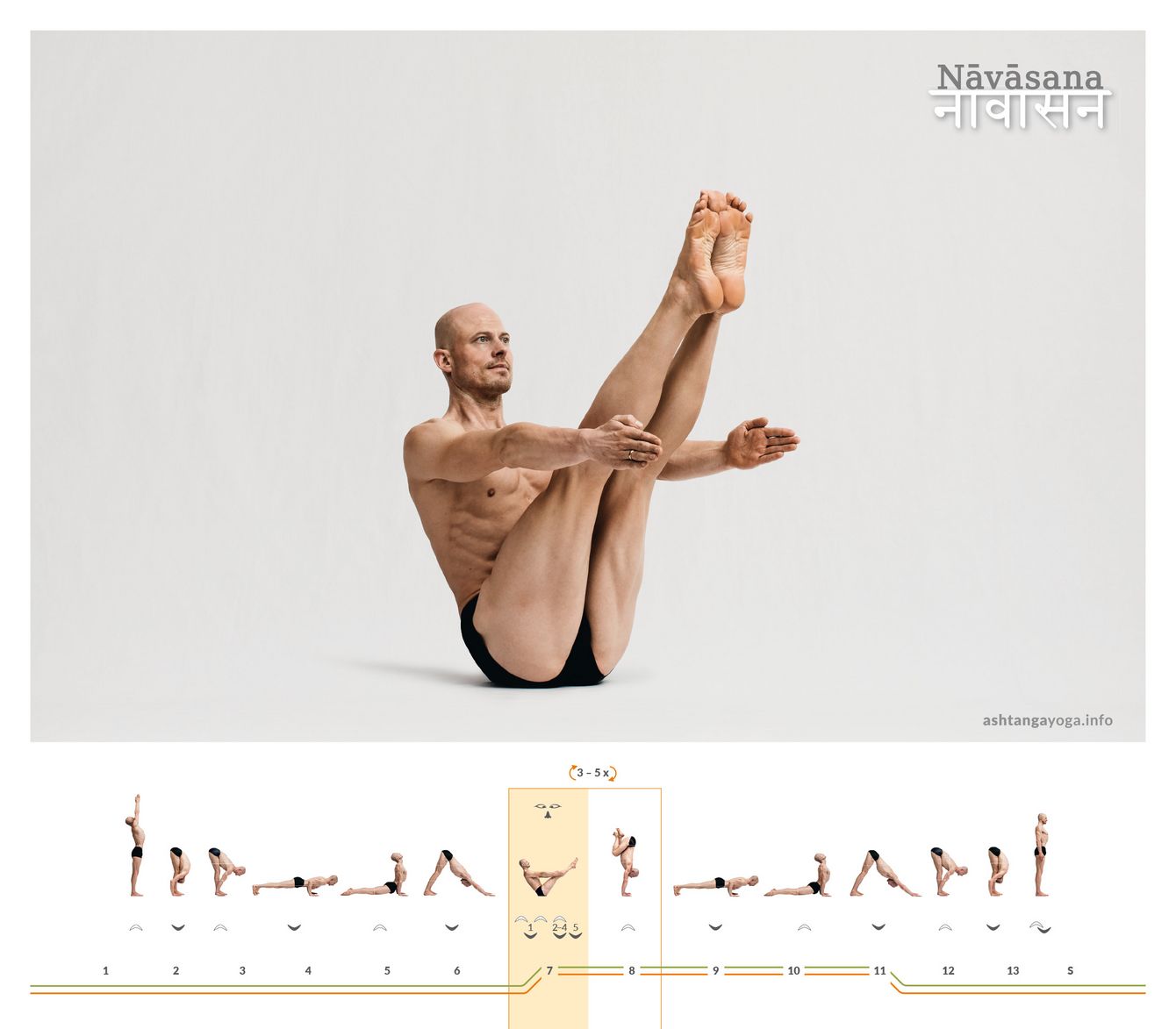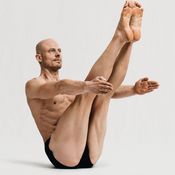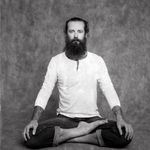

Directly from the Downward Facing Dog of the previous sequence.
Vinyāsa 7: Inhale, Exhale, 5 breaths:
Push off from the Downward Facing Dog on an inhale and glide into a balance on your hands. Use the exhale to slowly lower yourself between your arms. On an inhale, extend your legs diagonally and forward into the air. Stabilize your torso. Extend your arms horizontally forward. Your palms should face inwards. Remain here until the fifth exhale.
Try this: This posture is an excellent way to develop the lowering down from the balance pose on the arms to sitting. In a possible variation, consciously and powerfully extend your arms. Then you can fold your extended legs close to the upper body while keeping your pelvis as counterweight to your feet. Therefore, push your pelvis backwards so that it is located directly above your fingertips. Finally, the feet hover close to the ground between the hands. Through stability in the center of the body, you can now rotate your center of gravity around the axis of your shoulder joints. Your pelvis will come down while your feet move up.
Vinyāsa 8: Inhale:
At the end of the fifth exhale, prepare by placing your hands on the ground and curling up your body. Then, on an inhale, shift your weight onto your hands and move your center of gravity over them. This way, you come into a balancing pose on your hands.
Try this: Just as with the lowering down movement, you can also strive for height and elegance in your movement here when lifting. Ultimately, lifting, reversed from lowering, can be done with straight legs. The key is to draw your legs close to your upper body while still sitting. If you can maintain this stability while pushing your arms into the ground and rolling around your shoulder joints, then you have already mastered the most difficult part of the movement.
Vinyāsa 7 and 8: Three to five repetitions:
Repeat the descent from Vinyāsa 7 with the lift from Vinyāsa 8, three to five times. Remain until the fifth exhalation in Navāsana, at the end of Vinyāsa 7.
Vinyāsa 8 to 11:
After your third or fifth lift from Vinyāsa 8, follow the familiar movement flow into the "Downward Facing Dog".
In the traditional count, switch directly to the movement flow of the next pose.
Effect: The most important muscle to flex the hips is the iliopsoas (hip flexor). But this can only do its job if the deep abdominal muscles stabilize your entire trunk. Following this principle, Navāsana builds strength in your core. This strength is the key to stabilizing any kind of movement. The more acrobatic the movement, the more the core must stabilize and balance.
-
Das Bild zeigt Navasana, das Audio beschreibt Janu Shirshasana C ... Das Bild zeigt Navasana, das Audio beschreibt Janu Shirshasana C ...
-
Oh. Ich sage es nochmal neu an. Danke für Deinen Hinweis. Oh. Ich sage es nochmal neu an. Danke für Deinen Hinweis.
-


 Dr. Ronald Steiner
Dr. Ronald Steiner
 Richard Pilnick
Richard Pilnick



Messages and ratings